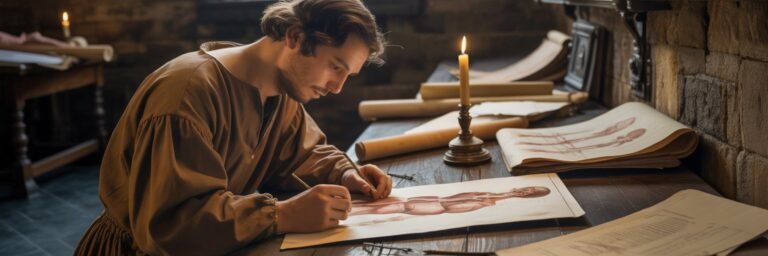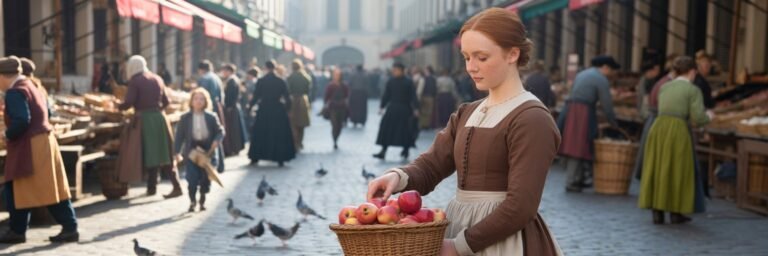INTRODUCTION
The woof and warp of our modern age are woven with the vibrant threads of the Renaissance—the period of ideological and cultural reformation that marked the transitional phase from the Middle Ages to the modern world. Its distinct influence permeates through our contemporary society across multiple facets: our political systems, scientific understanding, creative arts, education systems, and even our existential perspectives. The legacy of the Renaissance signifies the dawn of the modern world and our flourishing as intellectual and socially conscious beings.
HISTORICAL BACKGROUND
From the 14th to the 17th century, a paradigm shift in European civilization arose, known as the Renaissance, a French term translating to ‘rebirth’. It began in Italy and was primarily influenced by the rediscovery of Greek and Roman knowledge that had been neglected or forgotten in the Middle Ages. The revival incorporated profound advancements in art, literature, education, technological innovation, scientific thought, and an evolving sociopolitical landscape.
Legendary names of human history—including Leonardo da Vinci, Michelangelo, Raphael, Galileo Galilei and Thomas More— are products of this era. Their works and ideologies have shaped the contours of our modern society through diverse domains such as science, humanities, and art. Their collective accomplishments represent the intellectual potential of humankind—in the face of collective adversity and restrictive norms, the human spirit shone forth in a remarkable display of brilliance.
THEORIES AND INTERPRETATIONS
Academic interpretations of the Renaissance vary from the traditionalist perspective, which promotes the period as a clear, transformative epoch, to the revisionist view, which argues for the Renaissance as part of an ongoing historical continuum. Traditionalists such as Jacob Burckhardt perceived the Renaissance as a distinct epoch of robust cultural and intellectual rejuvenation, which laid the groundwork for contemporary Western civilization.
Conversely, Revisionists like Peter Burke argue the Renaissance was a series of cultural movements spread across Europe and did not usher in an entirely new epoch, but somewhat enhanced and transformed existing processes and ideas. Osvaldo G. A. Montelongo, another revisionist, noted that some scholarly concepts from the Middle Ages remained engrained in Renaissance society alluding to an incomplete cultural upheaval.
MYSTERIES AND CONTROVERSIES
Controversies and mysteries also imbue the period—the origins are contested, with some scholars like Frederick Hartt asserting Florence as the heartland of the Renaissance and others, such as Paul Osborne, arguing that the movement seed was sown earlier within the broader Italian peninsula.
Moreover, Renaissance thinkers like Galileo and Copernicus challenged the Church’s geocentric model of the universe with their heliocentric theory, inciting a period of violent clash between religion and science. Scholasticism, a critical medieval ideology, was uprooted by humanism during the Renaissance—a shift that remains a cause for academic debate.
SYMBOLISM AND CULTURAL SIGNIFICANCE
The Renaissance heralded the arrival of the humanistic philosophy, emphasizing human potential, emotionality, and wisdom. It placed man—the curious, imaginative, and innovative creature—at the center of the universe. This symbolic metamorphosis from medieval religious rigidity to human-centric concepts enhanced individual empowerment and insight.
Art and literature of this era reflect this transformation. Works such as Leonardo’s “Mona Lisa” or Botticelli’s “Birth of Venus” personify the same—depicting palpable human emotion and organic beauty, reflecting the spirit of the age. Dante’s Divine Comedy, Petrarch’s sonnets, and Cervantes’ Don Quixote opened readers’ minds to the aspects of human experience and intellect, symbolizing the cultural leap.
MODERN INVESTIGATIONS
Modern investigations into the Renaissance revisit the age-old discussion about race, gender, and class during the epoch. Contradicting the traditional perception of the Renaissance as an egalitarian intellectual meritocracy, scholars like Ian Maclean have emphasized the period’s entrenched sexism. Meanwhile, historians like Kate Lowe have explored the underrepresented narratives of non-white people in Renaissance Europe.
Furthermore, advanced technological tools are unveiling new insights about art. The ‘Hidden Leonardo’ project used multispectral imaging technology to reveal previously invisible drawings underlying da Vinci’s The Virgin and Child with Saint Anne.
LEGACY AND CONCLUSION
Despite centuries having passed, the embers of the Renaissance continue to ignite our modern world. Its legacy is embedded in our rational scientific thought, celebrated in our creative arts, and understood through the principles of our political systems. It heralded societal transformation from feudalism to capitalism and from theocracy to democracies, underscoring the importance of individual capabilities.
In the realm of science, the Renaissance awakened a spirit of discovery and curiosity. Great thinkers like Copernicus, Galileo, and Kepler set the stage for the scientific revolution and dispelled superstitions, empowering humanity to explore the cosmos and establish the laws of nature.
In the arts, the Renaissance left an indelible aesthetic legacy. Be it in the timeless masterpieces that grace our galleries today or our perception of artistic expertise—art as a representation of human sentiments and experiences was born from the Renaissance crucible.
Thus, the Renaissance is far from a distant memory confined in history books; it lives on around us, coursing through the arteries of our modern societies. As we navigate the complexities of our contemporary lives, understanding the consequences of our Renaissance heritage is both a fascinating venture and an imperative tool. Just like the bold navigators, humanists, and artists of the Renaissance, today’s mankind is similarly tasked with advancing through the elegance of thought, creativity, and a dogged spirit of exploration.


